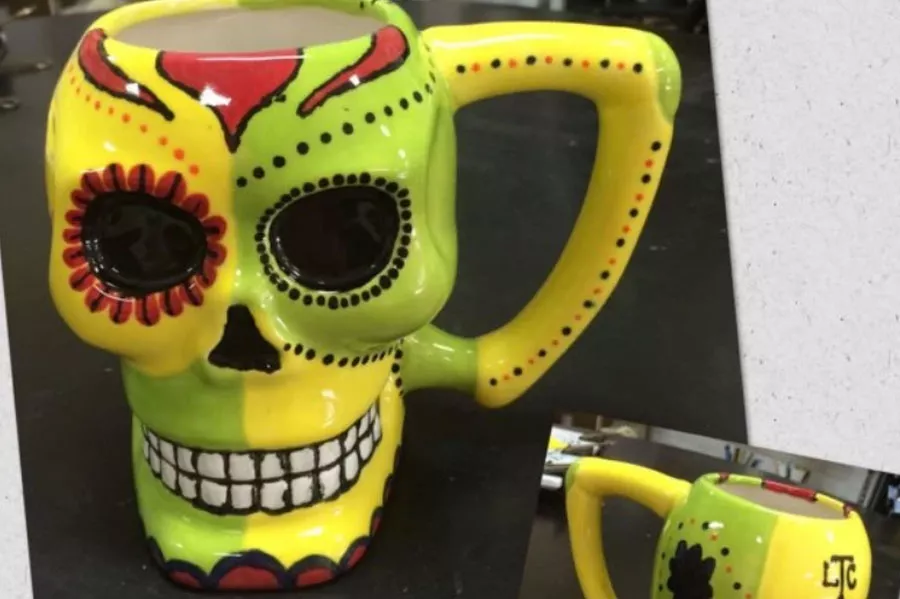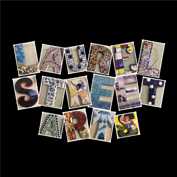
Laurel Street Arts is an annual event that brings together artists, locals, and tourists to celebrate the vibrant and dynamic world of street art. This unique festival takes place in the heart of the city, transforming the streets into an urban gallery like no other.
With its rich history and tradition, street art has become an integral part of the cultural fabric of our city. From colorful murals to thought-provoking graffiti, artists use the cityscape as their canvas, leaving behind a trail of creativity and self-expression.
During Laurel Street Arts, artists from around the world converge on our city to showcase their talent and create mesmerizing artworks. The festival not only allows visitors to admire these stunning creations but also provides a unique opportunity to interact with the artists, learn about their techniques, and gain insights into the stories behind their works.
From talented up-and-coming artists to renowned international street art legends, the festival showcases a diverse range of styles and artistic visions. From realistic portraits to abstract interpretations, the artworks on display capture the diversity and essence of our city, highlighting the unique cultural melting pot that we call home.
So, mark your calendars and join us for an unforgettable experience as we celebrate street art and its transformative power at Laurel Street Arts. Discover the beauty of urban art, immerse yourself in the vibrant atmosphere, and be inspired by the creativity that adorns our city’s streets.
The Evolution of Street Art
Street art has come a long way since its humble beginnings. What was once seen as graffiti and vandalism has now transformed into a respected art form that is celebrated and appreciated by many.
The roots of street art can be traced back to the 1960s when young artists began using the walls of their neighborhoods as a canvas for expressing themselves. This rebellious and underground art movement was a way for them to voice their opinions and showcase their creativity.
As time went on, street art evolved and started to incorporate various techniques and styles. Artists began experimenting with stencils, wheatpasting, and spray paint to create larger and more intricate artworks. These techniques allowed artists to work quickly and anonymously, making their mark on the cityscape.
One of the biggest turning points for street art was the emergence of the graffiti movement in the 1970s. Graffiti artists began tagging their names and creating elaborate murals on subway trains and city walls. This form of street art gained attention and notoriety, sparking a debate about its legality and artistic value.
Street art continued to evolve in the 1980s and 1990s with the rise of hip-hop culture. Graffiti became closely linked with this movement, as artists used their art to express their love for music and urban culture. Stylized lettering and bold colors became trademarks of hip-hop graffiti, giving it a distinct and recognizable style.
In the 21st century, street art has become more mainstream and accepted as a legitimate art form. Artists like Banksy and Shepard Fairey have gained international recognition for their thought-provoking and politically-charged artworks. Their work has been exhibited in galleries and museums around the world, blurring the lines between street art and traditional art.
Today, street art continues to evolve and push boundaries. Artists are using new technologies and materials to create stunning and interactive installations. They are also exploring themes of social justice, environmentalism, and identity, using their art to make powerful statements and provoke conversations.
Overall, the evolution of street art has been remarkable. What was once considered an act of rebellion and vandalism has now become a global artistic movement. Street art has the power to transform public spaces, inspire communities, and challenge the status quo.
Street Art Techniques

Street art is a form of artistic expression that takes place in public spaces, often created without official permission. It can take many different forms and utilize a variety of techniques. Here are some of the most common techniques used in street art:
Stenciling

Stenciling is a popular technique in street art that involves creating a design by cutting out a pattern on a piece of paper or plastic and then spraying paint or using a brush to apply the paint over the stencil. This technique allows the artist to quickly and easily create repetitive designs and patterns.
Graffiti

Graffiti is one of the oldest and most recognizable forms of street art. It involves using spray paint or markers to create a design or tag on a wall or other surface. Graffiti can range from simple tags to elaborate murals, and often serves as a form of self-expression and public commentary.
Other common techniques in street art include wheatpasting, which involves applying a paste made from a mixture of flour and water to adhere posters or prints onto surfaces, as well as sticker art, yarn bombing, and mosaic installations. These techniques all contribute to the vibrant and dynamic nature of street art.
A Gallery in the Streets

Laurel Street Arts is not your typical art gallery. Situated in the heart of the city, it brings art to the public in a unique and captivating way. Instead of confining art behind closed doors, Laurel Street Arts celebrates street art and transforms the city streets into a gallery.
Walking down the bustling sidewalks, visitors are treated to an array of vibrant and thought-provoking artwork. From large-scale murals to intricate stencils, the walls of the city become a canvas for local and international street artists. Each piece tells a story and adds a splash of color to the urban landscape.
One of the standout features of Laurel Street Arts is its commitment to showcasing a diverse range of artistic styles and themes. From abstract expressionism to political statements, there is something for everyone. The curated selection of artwork reflects the rich tapestry of cultures and voices in the community.
Visiting Laurel Street Arts is an interactive experience. As you stroll through the streets, you can engage with the art in a way that museums and traditional galleries don’t allow. You can take photos, strike up conversations with fellow art enthusiasts, or simply pause to admire the incredible talent on display.
In addition to the artwork, Laurel Street Arts also hosts events and workshops throughout the year. These events provide an opportunity for artists to connect with the public and for visitors to deepen their appreciation for street art. From live painting sessions to artist talks, there is always something happening at Laurel Street Arts.
| What Art Lovers Can Expect | Location | Contact |
|---|---|---|
| A diverse range of street art | In the heart of the city | 123 Laurel Street |
| Interactive experience | City, State | info@laurelstreetarts.com |
| Events and workshops | ZIP Code | (123) 456-7890 |
Street Art as a Catalyst for Change

One of the reasons street art is such an effective catalyst for change is its accessibility. Unlike traditional forms of art that are often confined to galleries and museums, street art is open and accessible to all. It can be found in the nooks and crannies of cities, transforming ordinary walls into vibrant canvases. This accessibility allows street art to reach a wide audience and communicate powerful messages that resonate with people from all walks of life.
Street art has the power to challenge the status quo and amplify marginalized voices. Artists use this medium to draw attention to social issues, shed light on injustices, and give a voice to those who are often silenced. By reclaiming public spaces and using them as a canvas for their art, street artists can bring attention to topics that may otherwise go unnoticed.
Moreover, street art fosters a sense of community and connection. It encourages interaction and dialogue among people who may not usually engage in conversations about social issues. When a powerful piece of street art is displayed, it becomes a focal point that draws people together, sparking conversations and inspiring collective action.
In addition to its social impact, street art also has the ability to revitalize neighborhoods and transform dull and neglected spaces into vibrant and lively ones. By injecting color and creativity into urban environments, street art can transform the perception of a place, making it more inviting and inspiring a sense of pride within the local community.
Overall, street art serves as a catalyst for change by challenging social norms, amplifying marginalized voices, fostering community engagement, and revitalizing urban spaces. Its ability to provoke thought, inspire action, and transcend cultural and socio-economic barriers is what makes street art a powerful tool for driving positive change.
The Challenges of Street Art

While street art has gained recognition and popularity in recent years, it still faces numerous challenges that artists must navigate. One key challenge is the legal aspect of street art. In many places, graffiti and street art are considered illegal and artists risk fines or even imprisonment for creating their art on public property without permission.
Another challenge is the ephemeral nature of street art. Unlike art created on canvas or in a gallery, street art is subject to the elements and vandalism. The art may be damaged or removed shortly after it is created, making it difficult for artists to share their work with a wider audience.
Additionally, street art often faces criticism and controversy. Some people view it as vandalism or a blight on public spaces. Others argue that it is a valuable form of expression and adds vibrancy to urban environments. Artists must navigate these differing opinions and sometimes face backlash for their work.
Furthermore, gaining recognition and exposure as a street artist can be challenging. Unlike traditional art forms, there are limited avenues for showcasing and selling street art. Artists must find alternative ways to promote their work, such as social media or organizing local exhibitions or festivals.
Despite these challenges, street art continues to thrive and evolve. Artists push boundaries and find innovative ways to share their art with the world. The challenges they face only strengthen their resolve and passion for their craft.
Street Art Festivals and Events

Street art has become a vibrant and exciting form of artistic expression, and the popularity of street art festivals and events continues to grow around the world. These festivals not only provide a platform for artists to showcase their talent but also engage and inspire local communities.
1. International Street Art Festival

The International Street Art Festival brings together artists from all over the world to create stunning murals and installations. This festival is a celebration of creativity and allows artists to collaborate and exchange ideas. Visitors can explore the transformation of public spaces and experience the vibrant energy of street art.
2. Community Mural Project

The Community Mural Project is a unique street art event that involves local residents and artists coming together to create a large-scale mural in their neighborhood. This project not only beautifies the community but also fosters a sense of unity and pride among its residents. The collaborative nature of this event encourages creativity and builds connections within the community.
Moreover, many cities host annual street art festivals that showcase the work of local and international artists. These festivals feature live art demonstrations, exhibitions, and workshops, providing a platform for artists to interact with the public and share their creative process. It also allows visitors to immerse themselves in the diverse and dynamic world of street art.
Street art festivals and events contribute to the cultural fabric of a city, transforming public spaces into open-air galleries. They serve as a platform for artists to express their unique perspectives and bring art closer to people’s daily lives. These events not only promote artistic expression but also contribute to the revitalization of neighborhoods and foster community engagement.
The Future of Street Art

Street art is a dynamic and ever-evolving form of artistic expression that has captured the attention and imagination of people around the world. As cities continue to grow and change, street art plays an important role in shaping the identity and culture of urban spaces. It challenges traditional notions of art by taking it out of the confines of galleries and museums and bringing it to the streets where it can be enjoyed by anyone, anytime.
With the advent of new technologies and social media platforms, the future of street art is bound to be even more exciting and interactive. Artists can use augmented reality to create immersive experiences where viewers can interact with their artwork in new and innovative ways. Imagine walking down a street and suddenly seeing a mural come to life through your smartphone or being able to leave comments and share your thoughts on a piece of street art using a dedicated app.
Another trend that we can expect to see in the future is the fusion of street art and sustainability. Many street artists are already using eco-friendly materials and techniques in their work, but there is still much more that can be done. From creating urban green spaces to using renewable energy sources to power their installations, street artists are exploring ways to make art that not only beautifies the city but also contributes to its environmental sustainability.
Furthermore, street art has the power to raise awareness about important social issues and spark conversations. In the future, we can expect to see more street art projects that tackle topics like climate change, social inequality, and political activism. Street artists have a unique ability to capture the attention of passersby and provoke thought and action, and we can expect them to continue using their talents to make a positive impact on society.
Overall, the future of street art is bright and full of possibilities. As the boundaries of art continue to be pushed and new technologies emerge, street art will continue to evolve and adapt. It will remain an important form of artistic expression that brings beauty, culture, and a sense of community to our urban spaces. So the next time you walk down a city street, take a moment to appreciate the street art around you and look forward to the exciting future that lies ahead.

I am a mural enthusiast and a fervent admirer of street art. Rather than creating murals myself, I am passionate about collecting them. My love for street art knows no bounds. I am dedicated to curating and cherishing these artworks that grace the streets. My collection stands as a testament to my profound appreciation for this form of artistic expression.
read about me



